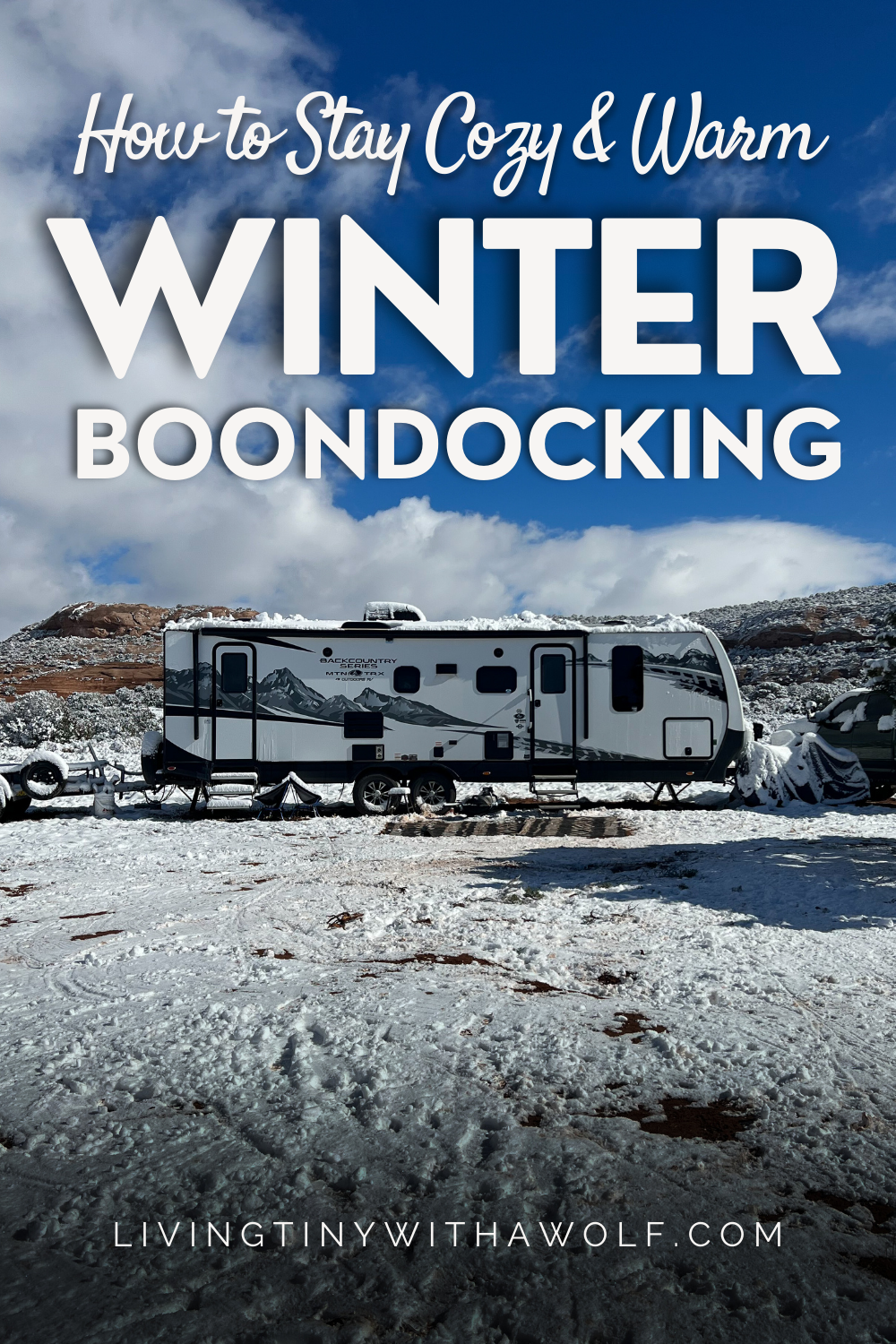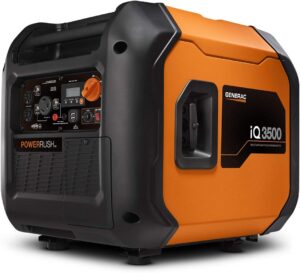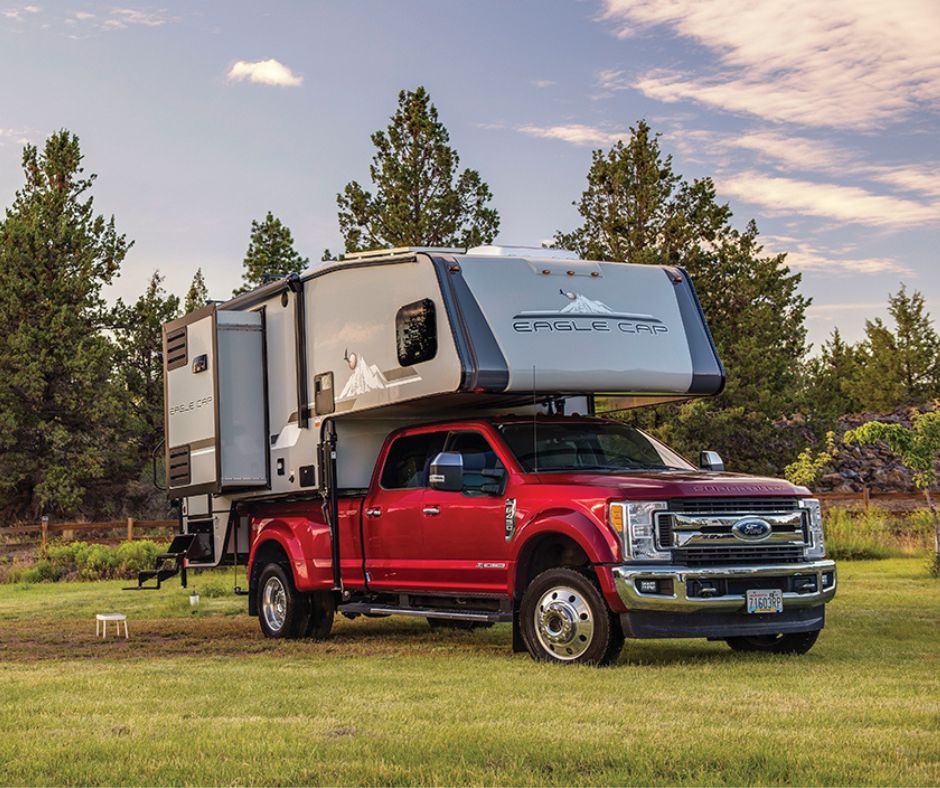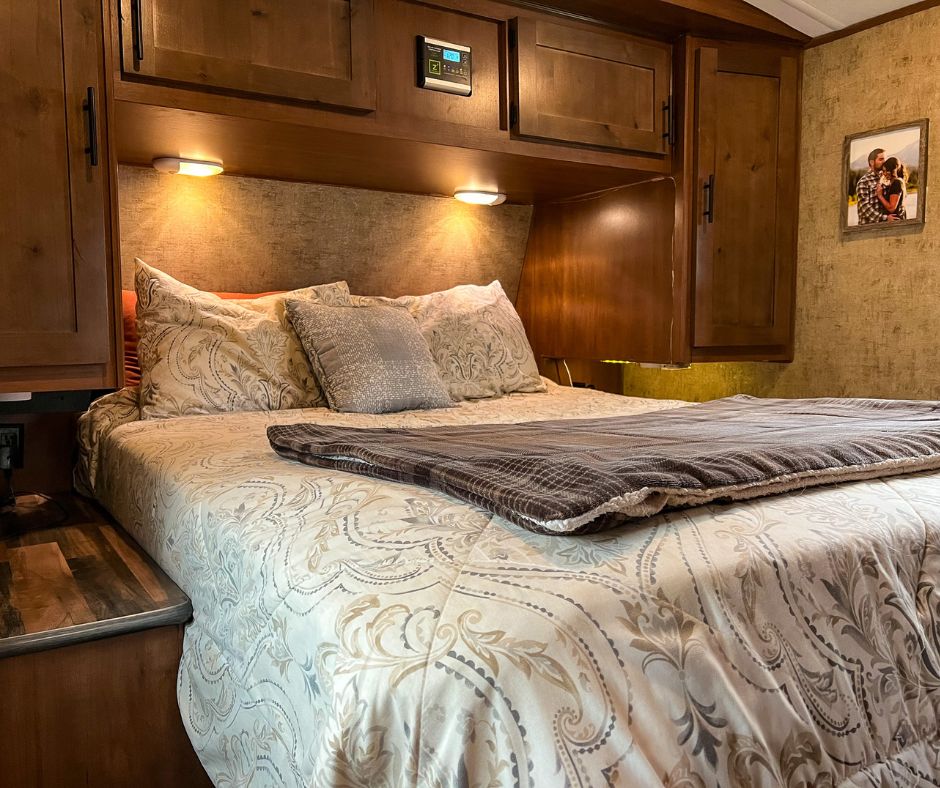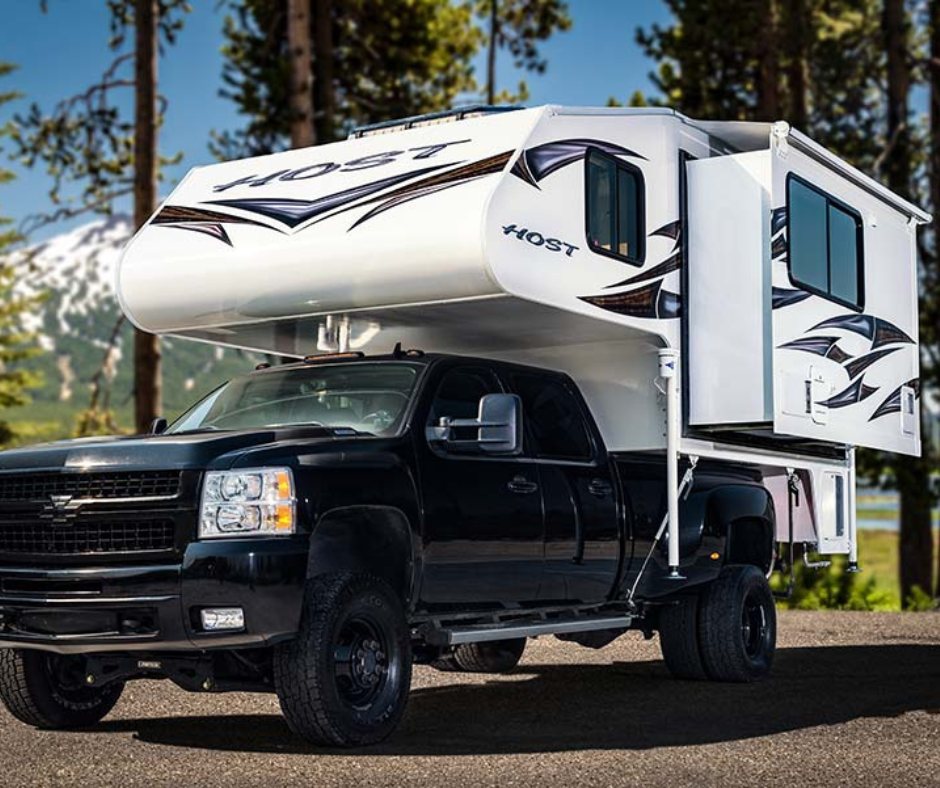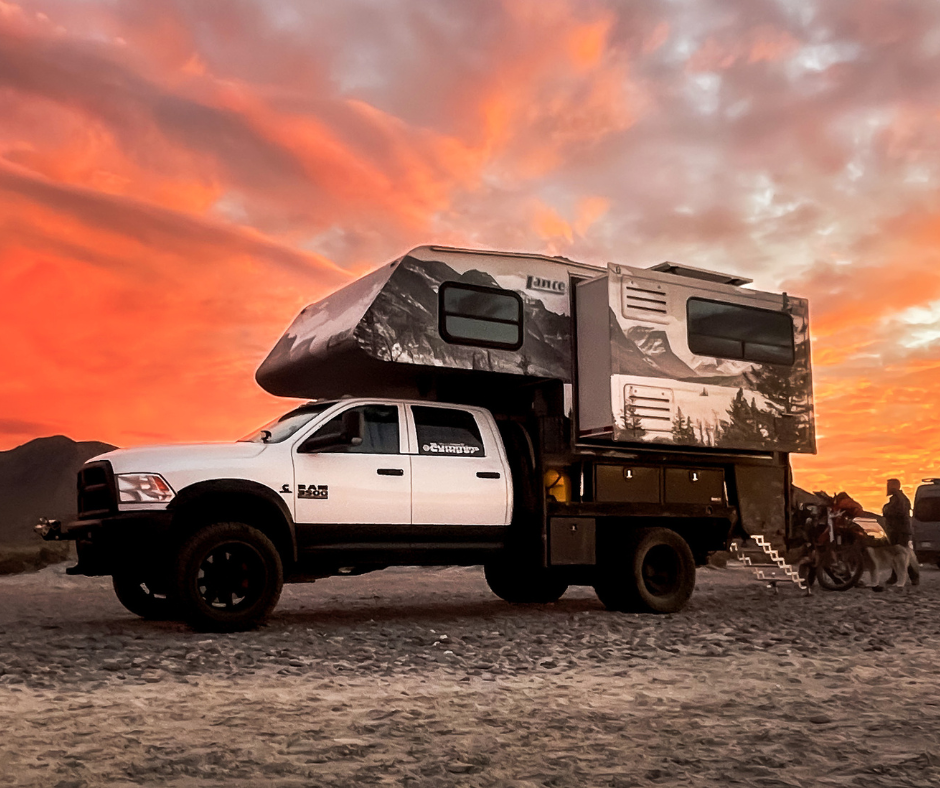How to Stay Warm & Cozy Boondocking in Winter
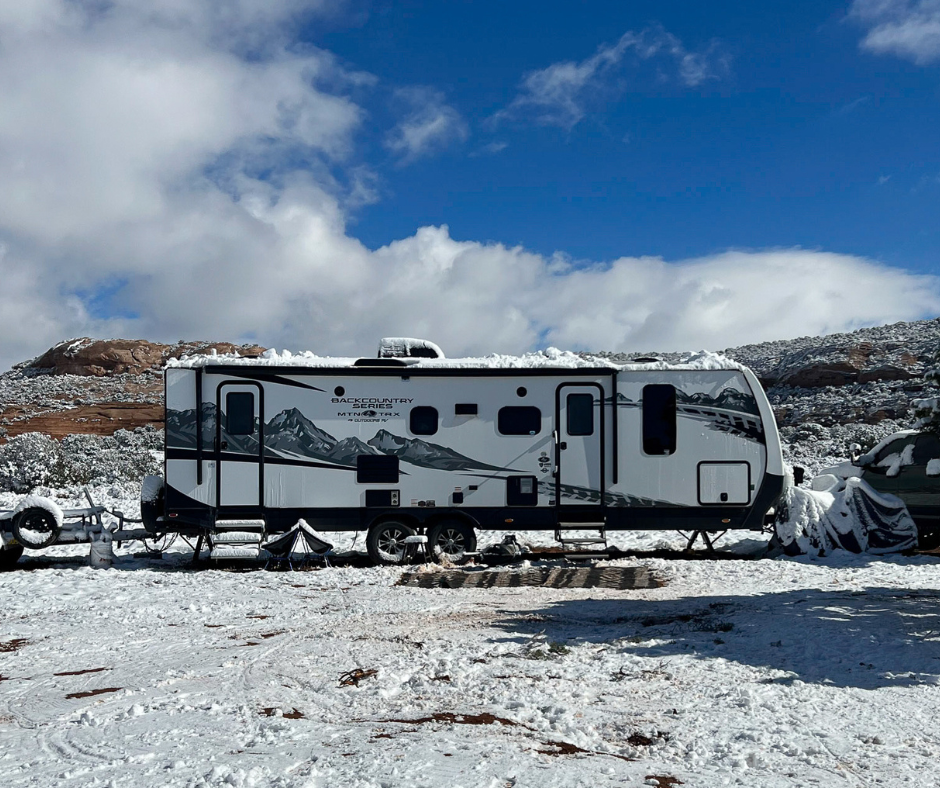
Table of Contents
ToggleHow to Boondock in the Winter
Boondocking in winter can be a unique and exciting experience for many who live full-time in an RV.
Some brave souls choose to boondock in the snow to experience a winter wonderland or be near a ski resort. But if you’re like us and prefer to avoid the cold altogether, heading south is always an option.
In this blog post, we’ll cover all aspects of winter boondocking, including tips for camping in the snow, heading south to warmer climates, and the best winter boondocking destinations.
Whether you’re a seasoned winter camper or just looking to escape the cold, we’ve learned some valuable lessons over the years.
So grab a cup of hot cocoa, and let’s dive into the world of winter boondocking!
Why Boondock in the Snow?
Quick Access to Ski Slopes: For those who enjoy skiing and winter sports, boondocking at a ski resort can be a great way to enjoy the slopes and experience the winter wonderland. By parking their RV in the ski resort’s parking lot overnight, RVers can save money on lodging and have easy access to the ski runs.
Adventure: Boondocking in the snow can be an adventure, and some RVers enjoy the challenge of navigating snowy conditions and camping in remote areas. With its harsh conditions and unpredictable weather, boondocking in the snow can be a thrilling and rewarding experience.
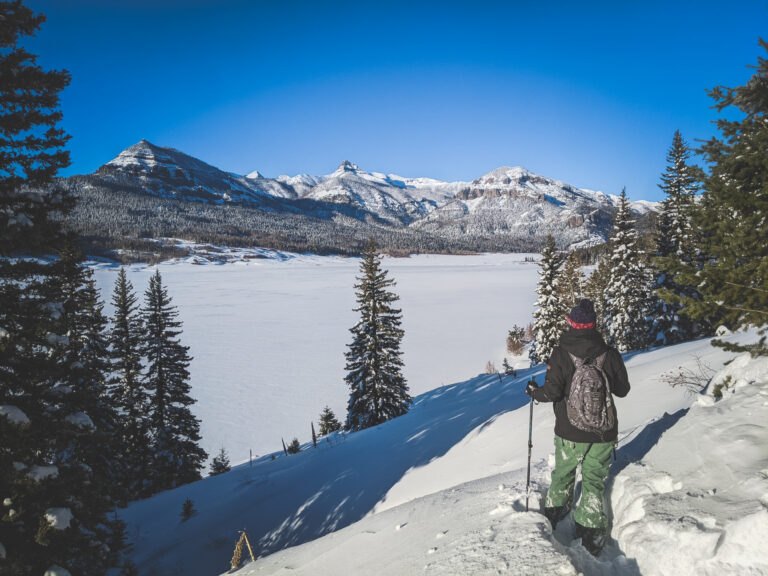
Tips for Boondocking in Winter with Snowy Conditions
Have you ever found yourself unintentionally snowed in during your travels?
It’s happened to us more than once! Whether we were caught in the shoulder season or just poor timing after visiting family for the holidays in Colorado, we’ve found ourselves boondocking in the snow.
But hey, it’s not all bad! Boondocking in the snow can be a magical and one-of-a-kind experience.
Sure, it’s not without its challenges, but with a few helpful tips and tricks, you can stay warm and cozy during your snowy escapades.
Have Full Propane Tanks
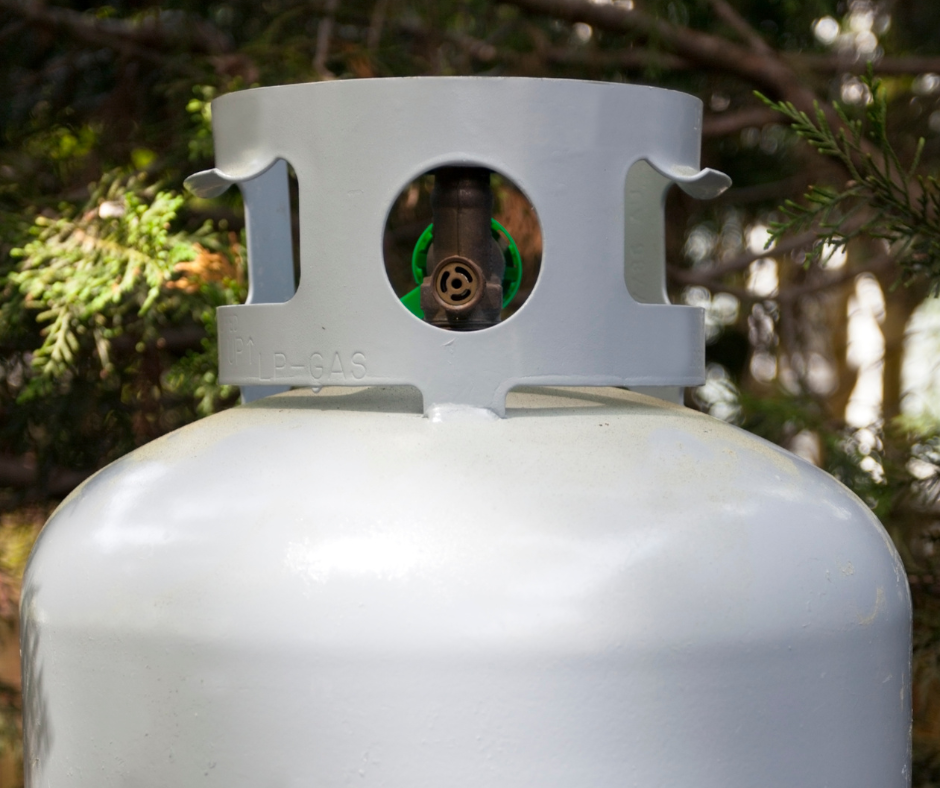
The first step is making sure that your propane tanks are full. Propane is an essential fuel source for many RV appliances, including the refrigerator, stove, water heater, and furnace. These appliances are vital for maintaining a comfortable living space during the colder winter months.
It’s also a good idea to bring a backup propane tank, in case your main tank runs low or you experience any other issues. This extra tank can provide peace of mind, knowing that you have a backup source of fuel in case of an emergency.
You May Need a Generator for Boondocking in Winter
When boondocking in winter months, particularly in colder climates, you’re going to need an additional source of power beyond what solar panels can provide.
That’s because the shorter days don’t give solar panels enough hours of sunlight to generate enough energy to keep your batteries charged. This is where generators come in.
Generally speaking, you want to get a generator that can provide between 3,600 to 5,000 watts of power so that you can run multiple electric appliances such as heaters and dehumidifiers in your RV. Alternatively, you could also chain together two 2,000 watt generators for 50 amp service.
Use a Dehumidifier To Prevent Condensation
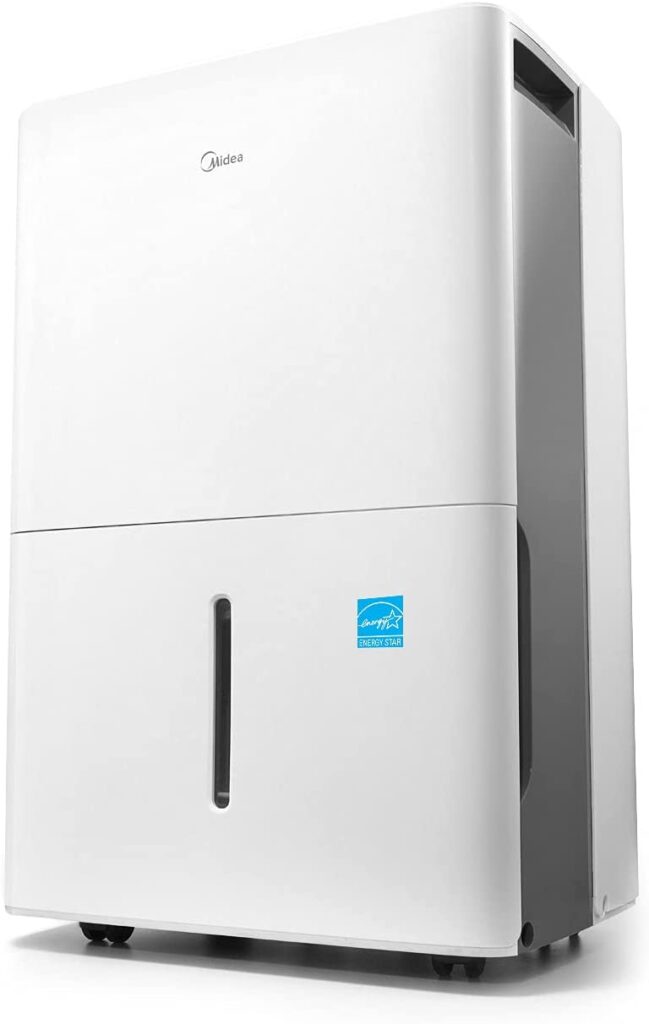
Condensation buildup is another issue you’ll want to deal with when boondocking in winter months since moist air can cause mold growth on walls and windowsills. A dehumidifier will help keep moisture levels low and prevent condensation buildup on surfaces inside your RV. Again though, this appliance requires a lot of wattage so you will want to have a generator powering your rig.
Use An Electric Space Heater in Your RV
You may also want to invest in a space heater. While a propane heater can provide some warmth, it might not be enough to keep you comfortable in colder temperatures. Space heaters are great for providing extra warmth during the coldest nights. Again, this appliance will have to be powered by your generator.
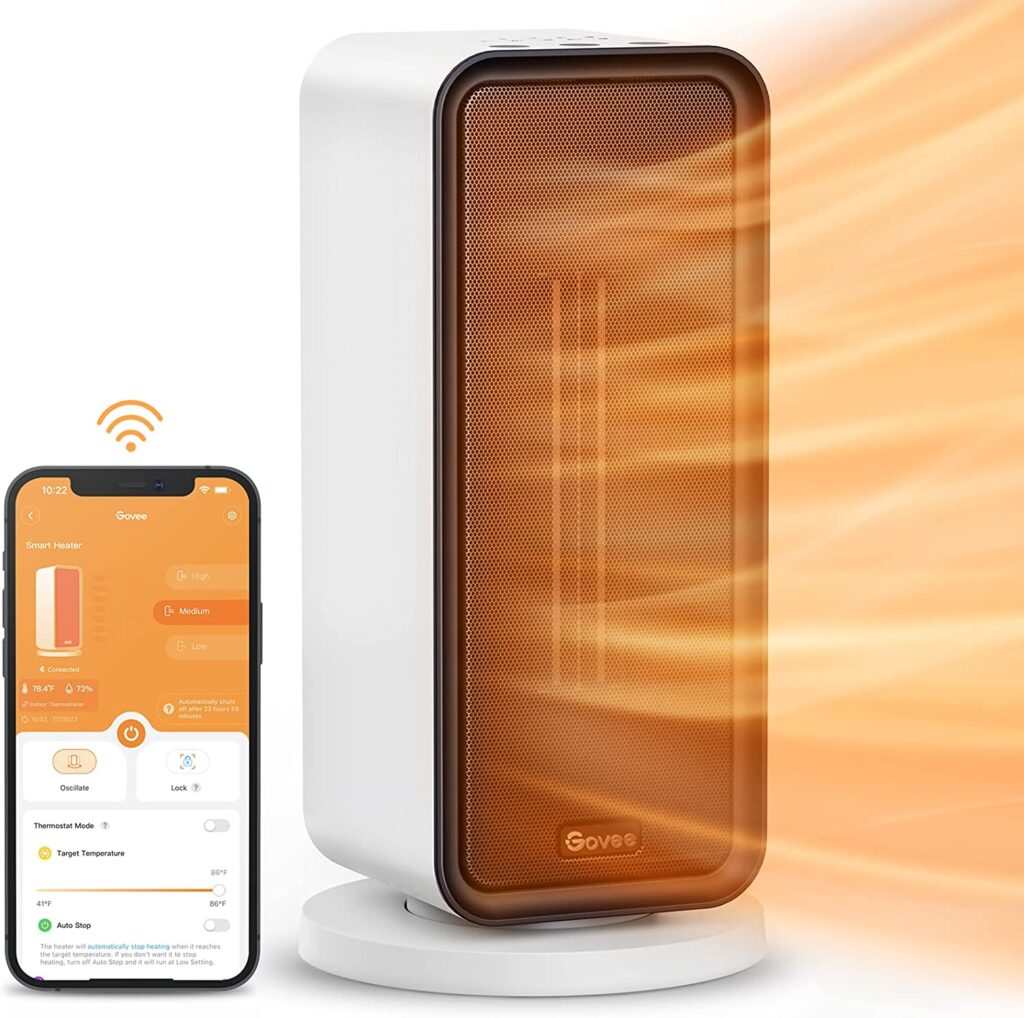
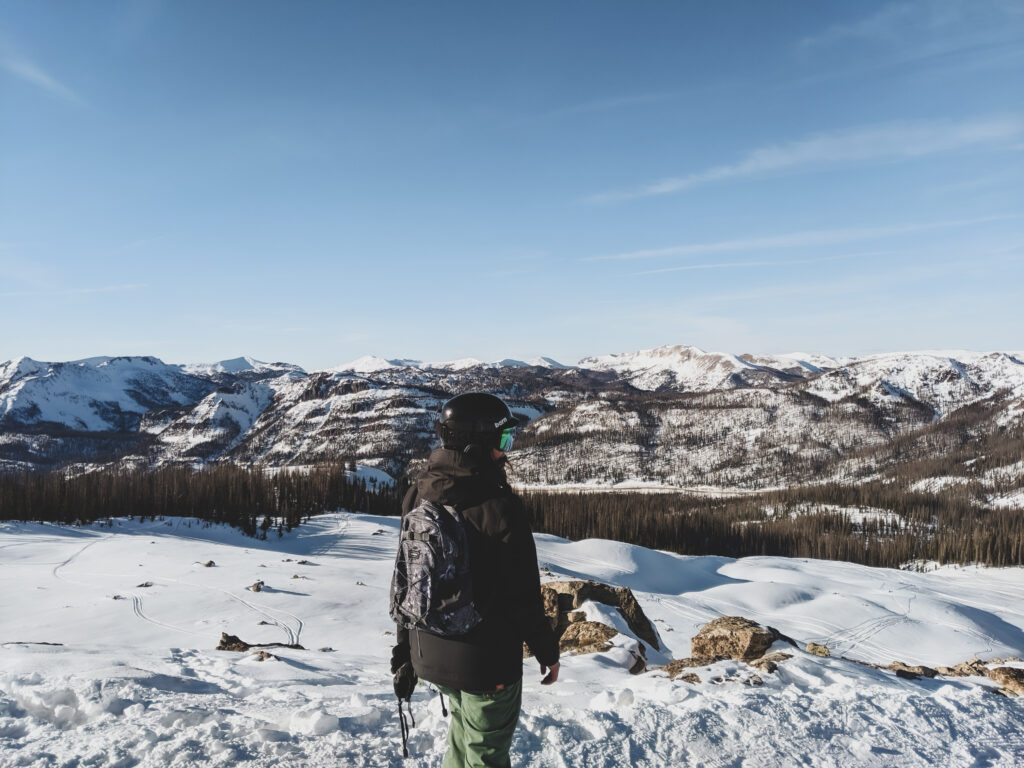
Choose A 4 Season RV For Winter Boondocking
When it comes to choosing an RV for winter living, there are certain features that will make your life much easier. Look for an RV with four-season design features such as:
Insulation: Four-season campers are built with high-quality insulation materials, which means they are better equipped to retain heat and keep you warm during the winter months. They are also equipped with thicker walls and windows to help prevent heat loss, making them ideal for cold-weather boondocking.
Heating: Winter boondocking can be challenging when it comes to keeping warm. A four-season camper is equipped with a reliable heating source, such as a furnace or diesel heater, that can provide you with consistent heat even in sub-zero temperatures. This will ensure that you stay comfortable throughout your trip.
Heated Holding Tanks: Winter boondocking can put a lot of stress on your RV’s water systems, especially if they are not designed for extremely cold weather. A four-season travel trailer is built with tanks and plumbing systems that are designed to withstand freezing temperatures and equipped with heated holding tanks so you won’t have to worry about any damage to your water system while boondocking.
Durability: Four-season campers are built to withstand harsh weather conditions, including heavy snow and extreme temperatures. This means that you can feel confident that your RV will remain in good condition throughout your winter boondocking trip, even in the most challenging weather conditions.
Check out our list of the Best 4 Season Travel Trailers for Full Time Living
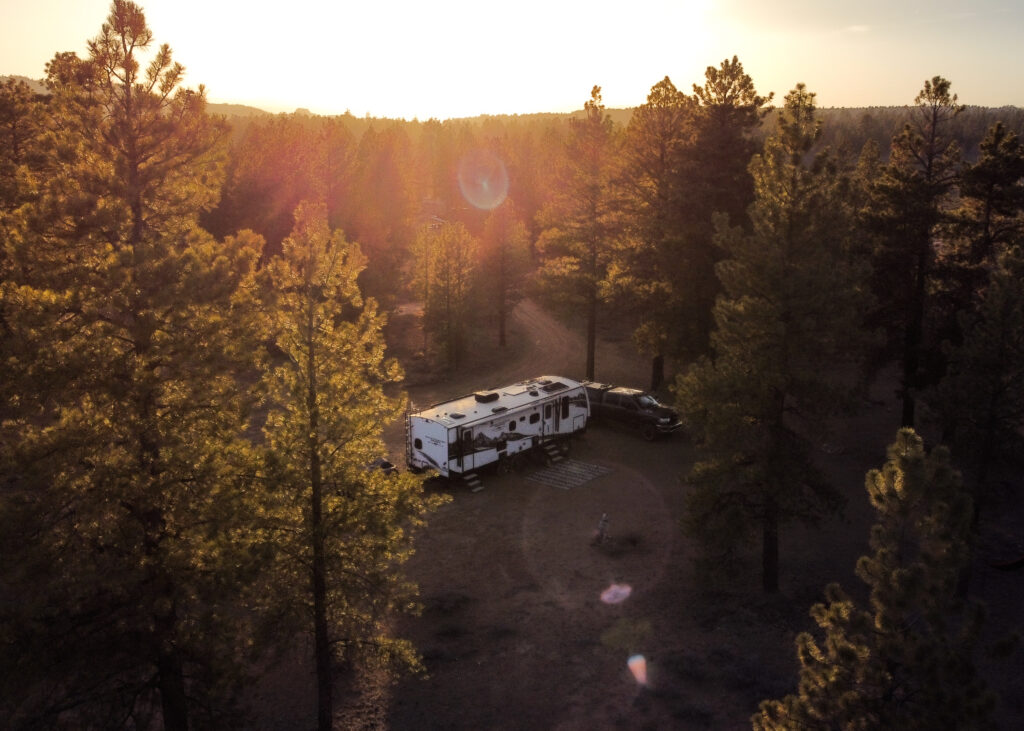
Tips For Winter Boondocking in the Snow
If you’re not prepared for the unexpected, such as a snowstorm, it can quickly turn into a nightmare. If you want to stay safe and comfortable while boondocking near or in snowy conditions, here are some tips that will help you prepare.
Clear Off Any Snow From Solar Panels on Top of Your Rig
If there is any solar equipment or other items mounted on top of your rig, be sure to clear them off after each snowfall so they aren’t damaged due to heavy snow accumulation. You may also want to invest in a tarp and some straps so that you can cover up any exposed areas during heavy snows. Make sure to check all of your roof vents and seals periodically throughout the winter months as well in case any have become loose or damaged due to weather conditions.
Check The Weather Regularly
It’s important to check the forecast regularly when boondocking in an RV. This will help you avoid getting caught off guard by unexpected storms and give you time to prepare. Pay particular attention to the temperature forecasts—if it is expecting to drop below freezing, make sure your water tanks are full and heated so they don’t freeze. Also make sure all of your windows are sealed and that your furnace is running properly so that your RV won’t get too cold inside.
Pack Tire Chains and Snow Tires
If you’re going to be boondocking in an area that gets regular snowfall, one of the most important things you can do is pack tire chains and snow tires to ensure that you have good traction while driving. This will help keep you safe and give you peace of mind that your vehicle won’t get stuck in the snow or ice. Be sure to practice putting them on before hitting the road so that if an emergency arises, you know exactly what to do.
Check Your Battery System
Cold weather can cause your battery to drain quickly, so it’s important to check your battery before setting out. If necessary, invest in a jump starter or an emergency power pack that will help keep your battery topped up while you’re out.
Have an Emergency Kit
You never know what can happen while boondocking, so it’s important to be prepared with an emergency kit filled with food, water, first aid supplies, flashlights, matches/lighters, and anything else you might need in case of an emergency. Having a shovel on hand is also important if you find yourself stuck in snow and need help digging out of it. Make sure you have a means of communication, such as a cell phone or two-way radio, in case you need to call for help.
Pack Extra Blankets and Clothing
Having enough warm clothing is essential for camping in cold weather. Make sure you have enough hats, gloves, and scarves to keep everyone warm throughout the trip. You may also want to invest in some hand warmers or heated blankets for those especially cold nights. It’s also important to bring along extra blankets or sleeping bags just in case one of them gets wet or damaged during your trip.
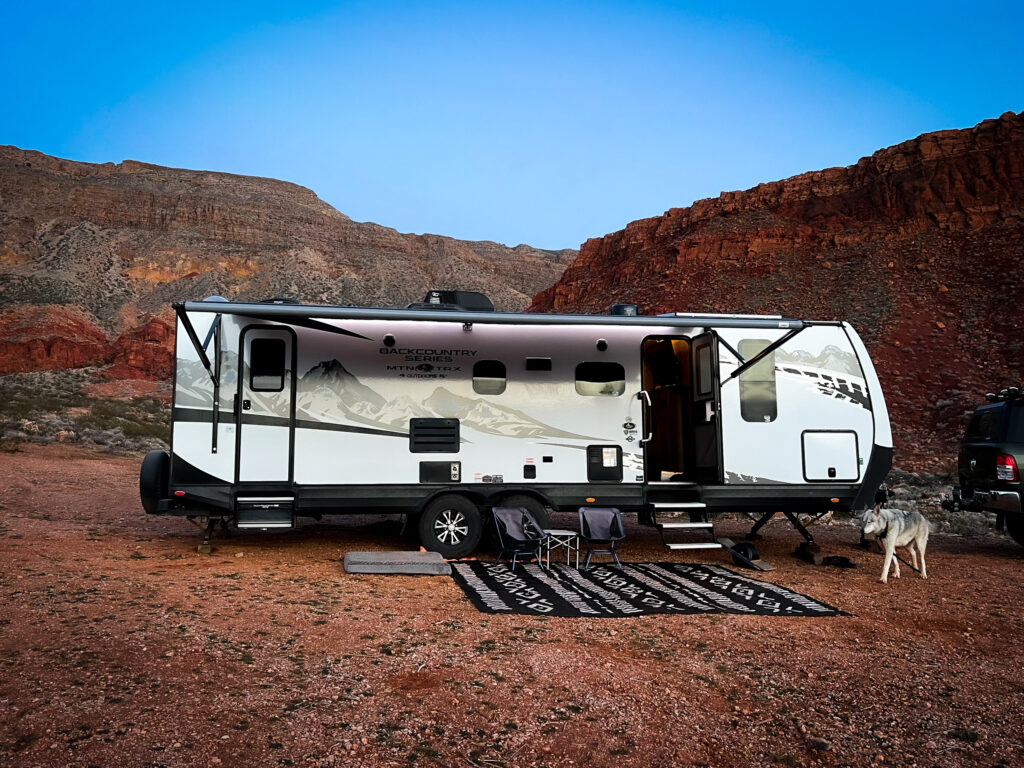
Best Places to Boondocking in Winter to Avoid the Snow
If you want to boondock in the winter but avoid the snow, you’re not alone. Many full-time RVers will travel to the desert during the winter months to avoid the snow and cold temperatures altogether. The Southwest is a popular destination for winter RVers, as it offers warm and sunny weather conditions, beautiful landscapes, and a wide range of recreational opportunities.
Here are some of the best winter boondocking destinations to consider:
Quartzsite, Arizona: This small desert town is a popular winter destination for RVers, and it’s easy to see why. With its sunny and warm weather, Quartzsite is a great place to enjoy outdoor activities, explore the desert, and connect with other RVers.
Yuma, Arizona: With average temperatures in the mid-60s during the winter months, Yuma is another popular winter boondocking destination. The area offers a range of boondocking options, from Bureau of Land Management (BLM) land to private RV parks and resorts, making it a great place to enjoy the sun and scenery.
Big Bend National Park, Texas: This stunning national park offers a range of boondocking opportunities for winter RVers, including remote campsites and dispersed camping areas. With its mild winter weather and breathtaking scenery, Big Bend is a great destination for outdoor enthusiasts.
Imperial Sand Dunes, California: The Imperial Sand Dunes are a popular destination for winter RVers, offering a range of boondocking options and sunny weather conditions. With its rolling sand dunes and beautiful sunsets, the Imperial Sand Dunes are a unique and memorable boondocking destination.
Organ Pipe Cactus National Monument, Arizona: This remote and rugged park is another great option for winter camping, offering stunning landscapes and mild winter weather. With its quiet and serene surroundings, Organ Pipe Cactus National Monument is a great place to escape the crowds and enjoy some peace and solitude.
Death Valley National Park: With its warm and sunny winter weather, Death Valley National Park is a great destination for winter RVers. The park offers a range of camping opportunities, including remote campsites and dispersed camping areas. With its unique landscapes, including vast sand dunes, salt flats, and towering mountains, Death Valley is a breathtaking destination for outdoor enthusiasts.
Joshua Tree National Park: This beautiful national park is located in southern California and is a popular destination for winter RVers. With its sunny and mild weather, Joshua Tree is a great place to enjoy outdoor activities, such as hiking, rock climbing, and stargazing.
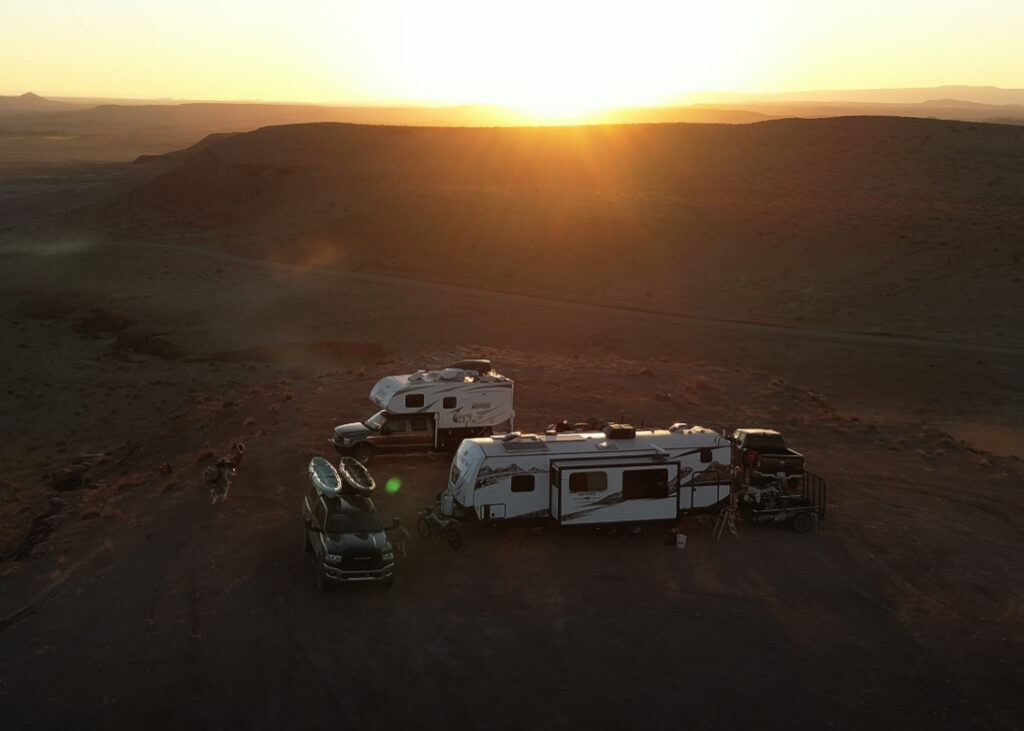
Why Full-Time RVers Choose to Winter in the Desert
Warm weather: The desert Southwest is known for its warm and sunny weather, which makes it an ideal destination for RVers who want to escape the cold and snow of the north. With temperatures often ranging from the mid-50s to low 80s, winter in the desert is a great time to enjoy outdoor activities and explore the natural beauty of the area.
Cost-effective: Wintering in the desert can be more cost-effective than staying in traditional RV parks or campgrounds, as many desert areas offer free or low-cost boondocking opportunities. This allows RVers to save money while still enjoying the comforts and amenities of their RVs.
Social community: The winter months bring a large influx of RVers to the Southwest desert areas, creating a social community of like-minded individuals. This can be a great way for full-time RVers to meet new friends and connect with others who share their interests.
Beautiful scenery: The Southwest is home to some of the most beautiful and unique landscapes in the country, from the red rock formations of Sedona to the towering saguaro cacti of the Sonoran Desert. Winter is a great time to explore these stunning areas, as the mild weather makes it easier to hike and camp.
Boondocking in Winter
Whether you’re looking to experience the beauty of the winter snow or escape to warmer climates, there are plenty of options to choose from. With proper planning, preparation, and equipment, you can make the most of your winter boondocking adventures, and create unforgettable memories. Remember to always check the weather and road conditions before setting out, and stay safe and warm during your travels.

Keep Reading:
